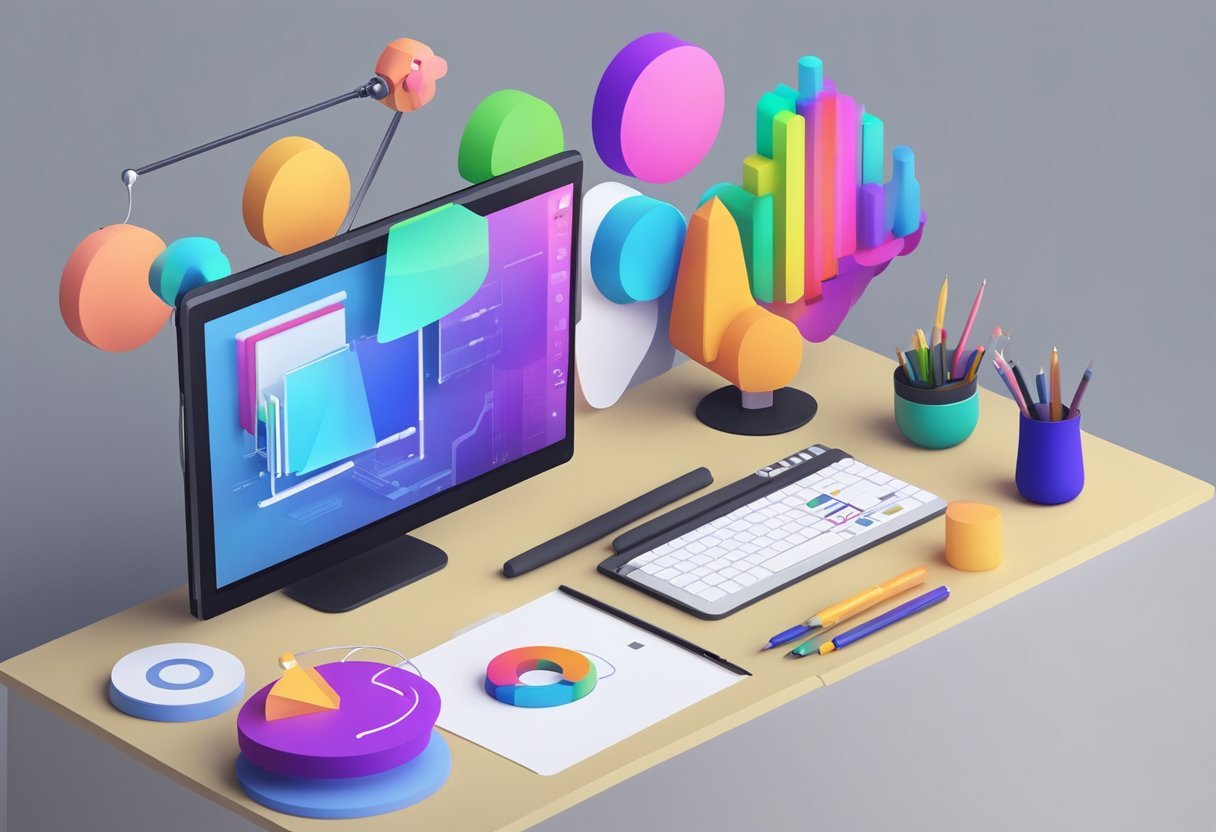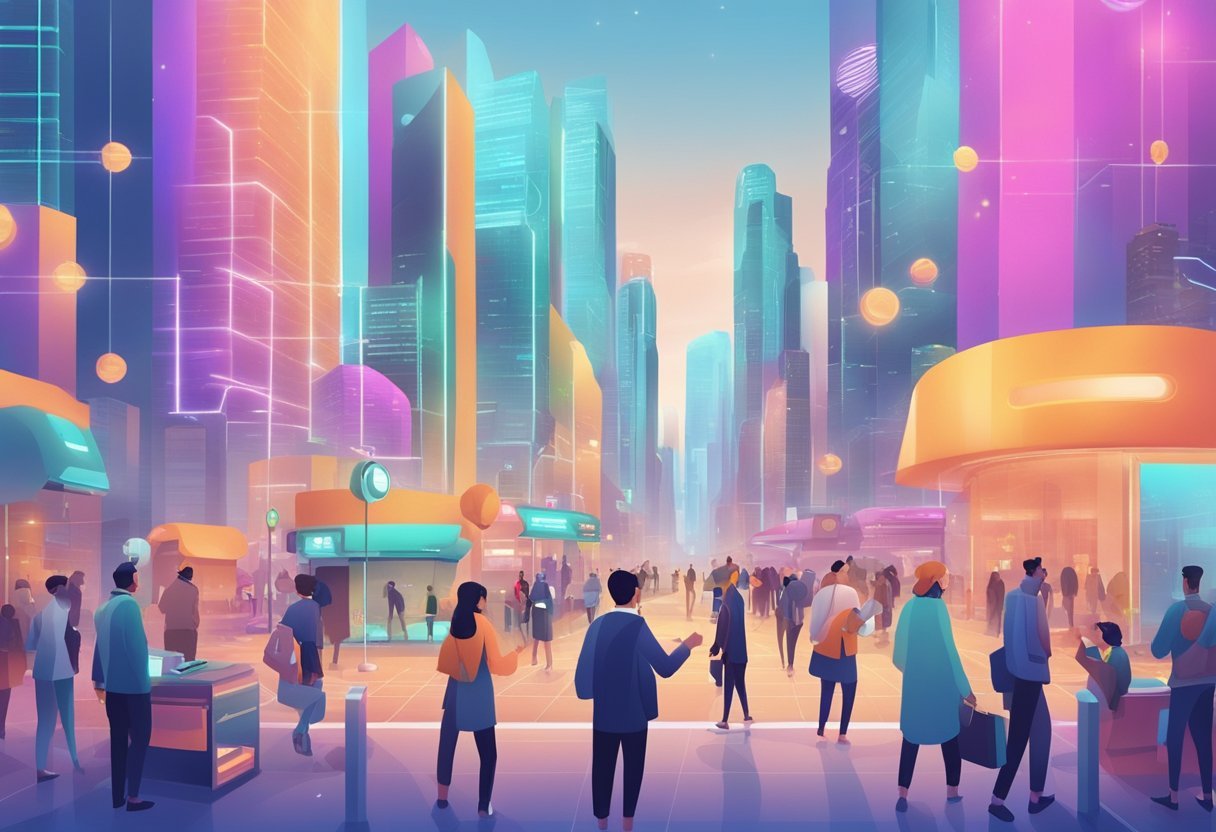Augmented reality (AR) development software is becoming increasingly popular as more businesses and individuals look to create immersive experiences for their customers and users. AR technology allows users to overlay digital objects onto the real world, creating a unique and engaging experience that can be used for a variety of purposes. From gaming and entertainment to education and training, AR has the potential to revolutionize the way we interact with technology. In this article, we will discuss ar development software and share with you the top 10 Augmented reality software you can use to create the best AR applications.
AR development software is the foundation of any AR project, providing the tools and framework necessary to create high-quality AR experiences. There are a variety of AR development foundations to choose from, including ARKit for iOS devices and ARCore for Android devices. These frameworks provide cross-platform APIs that allow developers to build immersive experiences that can be deployed across multiple devices. There are a variety of design and user experience considerations that must be taken into account when developing AR applications, including the need for intuitive and easy-to-use interfaces that allow users to interact with digital objects in a natural and intuitive way.
AR development software is a powerful tool that can be used to create immersive and engaging experiences for users. Whether you’re looking to create a new game, develop a training program, or build an interactive shopping experience, AR technology has the potential to transform the way we interact with technology. However, there are a variety of technical challenges and considerations that must be taken into account when developing AR applications, including performance, scalability, and compatibility with different devices and platforms.
Key Takeaways
- AR development software provides the tools and framework necessary to create high-quality AR experiences.
- Design and user experience considerations are important when developing AR applications.
- Technical challenges and considerations must be taken into account when developing AR applications.
AR Development Foundations
Augmented Reality (AR) is an emerging technology that is transforming the way we interact with the digital world. AR technology allows users to overlay digital content onto the real world, creating an immersive experience that blurs the line between the physical and digital worlds. This section will cover the key foundations of AR development, including understanding AR technology, key AR development platforms, and choosing the right AR SDK.
Understanding AR Technology
AR technology is the foundation of any AR development project. Understanding how AR works is essential for any developer looking to create AR experiences. AR technology relies on computer vision, which is the ability of a computer to interpret and understand the visual world. AR technology uses computer vision to recognize and track objects in the real world, allowing digital content to be overlaid onto the real world.
Key AR Development Platforms
There are several key AR development platforms that developers can use to create AR experiences. Some of the most popular AR development platforms include Unity, ARCore, ARKit, Vuforia, and Wikitude. Each platform has its own strengths and weaknesses, and developers should choose the platform that best suits their needs.
Unity is a popular game engine that is widely used for AR development. Unity provides a wide range of tools and features that make it easy to create AR experiences. ARCore and ARKit are AR development platforms created by Google and Apple, respectively. These platforms provide developers with a set of tools and APIs that make it easy to create AR experiences for Android and iOS devices.
Vuforia and Wikitude are AR SDKs that provide developers with a set of tools and APIs for creating AR experiences. These SDKs are designed to be easy to use and provide developers with a range of features, such as image recognition and tracking.
Choosing the Right AR SDK
Choosing the right AR SDK is essential for any AR development project. Developers should consider factors such as platform compatibility, ease of use, and feature set when choosing an AR SDK. Some of the most popular AR SDKs include Vuforia, Wikitude, and ARCore.
Vuforia is a popular AR SDK that provides developers with a range of tools and features for creating AR experiences. Vuforia is compatible with a wide range of platforms, including iOS and Android devices. Wikitude is another popular AR SDK that provides developers with a set of tools and APIs for creating AR experiences. Wikitude is designed to be easy to use and provides developers with a range of features, such as image recognition and tracking.
ARCore is an AR development platform created by Google that provides developers with a set of tools and APIs for creating AR experiences for Android devices. ARCore is designed to be easy to use and provides developers with a range of features, such as motion tracking and environmental understanding.
Understanding AR technology, choosing the right AR development platform, and selecting the right AR SDK are essential for any AR development project. Developers should carefully consider their needs and choose the platform and SDK that best suits their needs.
Best 10 AR Development Software

- Vuforia
- ARKit
- ARCore
- Wikitude
- Unity with AR Foundation
- Unreal Engine with ARKit and ARCore plugins
- Maxst AR SDK
- EasyAR
- Kudan AR SDK
- XZIMG Augmented Vision
Vuforia
Vuforia is a leading ar development software that enables developers to create augmented reality applications. It offers robust features such as image and object recognition, VuMarks (a combination of QR codes and AR markers), and ground plane detection. Vuforia’s Smart Terrain feature creates a 3D map of the environment, allowing for the placement of digital objects in a way that truly integrates with the real world.
The software supports a wide range of devices, including phones, tablets, and eyewear, which makes it a versatile choice for developers aiming to reach a broad audience. Vuforia’s advanced tracking and real-world orientation benefits developers by allowing the creation of deeply immersive and interactive AR experiences that can be used in various industries like gaming, retail, and education.
ARKit
ARKit is Apple’s proprietary ar development software that provides a platform for iOS developers to create high-quality AR experiences. It utilizes Visual Inertial Odometry (VIO) to accurately track the environment and allows for features such as plane detection, face tracking, and realistic rendering. ARKit’s latest updates include ARKit 3, which introduces motion capture and people occlusion, allowing digital objects to interact with people in real time.
The software’s integration with Apple’s ecosystem allows for seamless user experiences and easy deployment on the App Store. The benefits of using ARKit include access to a large user base of iOS devices, the ability to create highly realistic AR scenes, and the continuous support and updates from Apple, ensuring cutting-edge functionality.
ARCore
ARCore is Google’s ar development software, designed to bring augmented reality capabilities to Android smartphones. It provides developers with essential tools to understand the environment, detect surfaces, and estimate lighting conditions. ARCore’s Cloud Anchors feature enables shared AR experiences across multiple devices, and its Augmented Images function allows apps to respond to 2D images, such as posters or packaging.
This software is crucial for creating AR applications that are scalable across the vast Android ecosystem, offering benefits such as a wide reach, robust performance, and the ability to create collaborative and interactive AR experiences.
Wikitude
Wikitude is an ar development software that specializes in offering an SDK for both location-based and marker-based AR experiences. It supports multiple development languages and frameworks, which provides flexibility for developers.
Features include image recognition, object recognition, instant tracking, and geolocation. Wikitude’s Studio Editor allows for easy drag-and-drop AR experience creation, which can be beneficial for developers with limited coding skills. The software is widely used for creating AR apps in tourism, education, and marketing, offering a platform for engaging and informative user experiences.
Unity with AR Foundation
Unity with AR Foundation is a powerful ar development software that combines the popular Unity game engine with AR Foundation, a cross-platform framework that allows developers to build AR experiences once and deploy them across both iOS (ARKit) and Android (ARCore) devices.
This integration provides a unified workflow, which simplifies the development process, and supports features like face tracking, plane detection, and image tracking. Unity’s extensive asset store and supportive community are also key benefits, offering a wealth of resources and support for developers. The software’s ability to create visually stunning and interactive AR experiences makes it a top choice for game developers and creative professionals.
Unreal Engine with ARKit and ARCore plugins
Unreal Engine, equipped with ARKit and ARCore plugins, is an ar development software that brings high-fidelity AR creation to developers. Known for its powerful graphics engine, Unreal allows for the creation of immersive AR experiences with photorealistic rendering. The software’s visual scripting system, Blueprints, enables developers to quickly prototype and build AR applications without extensive coding knowledge.
The plugins for ARKit and ARCore provide a seamless way to deploy AR apps on both iOS and Android platforms. The main benefits of using Unreal Engine for AR development include its advanced rendering capabilities, robust platform support, and the ability to create complex AR experiences with relative ease.
Maxst AR SDK
Maxst AR SDK is an ar development software that offers both 2D and 3D image tracking, visual SLAM technology, and object recognition. It is a comprehensive solution for developers looking to create AR applications that require accurate and stable tracking in various environments.
Maxst’s multi-platform support ensures developers can target a wide audience, and its QR/barcode scanning integration adds to the versatility of AR applications. The benefits of Maxst AR SDK include its robust tracking capabilities, ease of integration with other technologies, and the support for creating AR experiences that are interactive and realistic.
EasyAR
EasyAR is an ar development software that provides essential AR features such as motion tracking, plane detection, and 3D object recognition. It is designed with a focus on ease of use and accessibility, aiming to lower the barrier to entry for AR development.
EasyAR’s SDK supports both Android and iOS platforms, and it offers a cloud recognition service for scalable image recognition. The benefits of using EasyAR include its user-friendly approach to AR development, cross-platform support, and a cost-effective pricing model for developers of all levels.
Kudan AR SDK
Kudan AR SDK is an ar development software known for its fast and efficient image recognition and SLAM technology. It allows for the development of AR applications that require precise and robust tracking, even in challenging conditions.
Kudan’s lightweight and flexible SDK is suitable for a variety of applications, from navigation aids to interactive marketing tools. The benefits of using Kudan include its high performance, the ability to work with limited resources, and the flexibility it offers developers in creating customized AR experiences.
XZIMG Augmented Vision
XZIMG Augmented Vision is an ar development software that provides solutions for face tracking, image tracking, and augmented reality glasses. It is designed to be integrated into various applications, including marketing, gaming, and virtual try-on systems.
XZIMG’s technology focuses on creating realistic and responsive AR experiences that can be accessed on a wide range of devices. The benefits of using XZIMG include its specialized features for facial augmentation, its compatibility with AR glasses, and its commitment to creating AR experiences that are both engaging and natural.
Design and User Experience
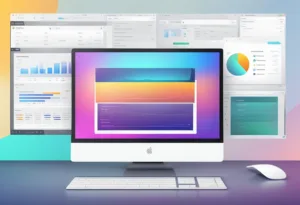
Design Principles for AR
Design is a crucial aspect of AR development, as it can make or break the user experience. The following design principles can help ensure that AR experiences are user-friendly and visually appealing:
- Simplicity: AR experiences should be simple and intuitive, with minimal clutter and distractions. This helps users focus on the task at hand and prevents them from feeling overwhelmed.
- Consistency: AR experiences should be consistent with the real world, with realistic physics, lighting, and shadows. This helps users feel like they are truly interacting with the environment.
- Accessibility: AR experiences should be designed with accessibility in mind, with clear and easy-to-understand instructions and feedback. This helps ensure that all users can enjoy the experience, regardless of their abilities.
Creating Immersive AR Experiences
Creating immersive AR experiences requires more than just good design principles. It also requires the use of 3D models and graphics to bring the experience to life. The following tips can help ensure that AR experiences are as immersive as possible:
- High-quality 3D models: 3D models should be high-quality and optimized for AR, with realistic textures and lighting. This helps ensure that the models look as realistic as possible when viewed through an AR device.
- Realistic physics: AR experiences should have realistic physics, with objects behaving in a way that is consistent with the real world. This helps users feel like they are truly interacting with the environment.
- Intuitive controls: AR experiences should have intuitive controls that are easy to use and understand. This helps users feel like they are in control of the experience and can fully immerse themselves in it.
Development Tools and Frameworks

When it comes to developing augmented reality (AR) applications, choosing the right development tools and frameworks can make all the difference. There are several options available, each with its own strengths and weaknesses. In this section, we’ll take a look at a few of the most popular choices in 2024.
ARCore and ARKit
ARCore and ARKit are two of the most widely used AR development tools. ARCore is Google’s AR SDK for Android, while ARKit is Apple’s SDK for iOS. Both offer a range of features, including 3D object tracking, image recognition, and visual SLAM. These tools are ideal for developers who want to create AR applications for mobile devices.
Cross-Platform AR Tools
Cross-platform AR tools are becoming increasingly popular, as they allow developers to create applications that can run on multiple platforms. One popular option is Vuforia Engine, which supports both Android and iOS. Another option is Unity’s AR Foundation, which is a framework for building AR applications that can run on multiple platforms, including Android, iOS, and Windows.
Open-Source AR Libraries
Open-source AR libraries are another option for developers. These libraries offer a range of features, including image recognition, 3D object tracking, and more. One popular option is ARToolKit, which is an open-source library for building AR applications. ARToolKit supports both Android and iOS and is available under the GPL license.
Choosing the right development tools and frameworks is essential for creating successful AR applications. ARCore and ARKit are popular choices for mobile applications, while cross-platform tools like Vuforia Engine and AR Foundation are ideal for developers who want to create applications that can run on multiple platforms. Open-source AR libraries like ARToolKit are also worth considering, especially for developers who want more control over their applications.
Practical Applications of AR
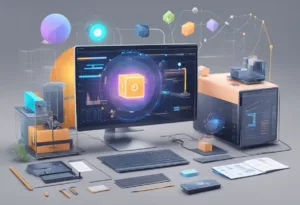
Augmented Reality (AR) has a wide range of practical applications in various industries. This technology is transforming the way people interact with the world around them. AR can be used in different industries such as education, healthcare, automotive, manufacturing, entertainment, gaming, and engineering. In this section, we will explore some of the most innovative use cases of AR.
AR in Different Industries
AR has been adopted in different industries to improve efficiency, productivity, and customer experience. In the education sector, AR technology can be used to enhance the learning experience of students. AR apps can be used to create interactive and engaging learning materials that make learning more fun and exciting.
In the healthcare industry, AR technology can be used to improve the accuracy of medical procedures. Surgeons can use AR headsets to visualize the patient’s anatomy in 3D, which can help them to perform surgeries with more precision and accuracy. AR can also be used to train medical students and professionals.
In the automotive industry, AR technology can be used to enhance the driving experience. AR headsets can be used to provide drivers with real-time information about the road conditions, traffic, and weather. AR can also be used to provide drivers with a heads-up display that shows them important information such as speed, fuel level, and navigation.
Innovative Use Cases
AR technology has opened up new possibilities for innovative use cases. In the entertainment industry, AR can be used to create immersive and interactive experiences for audiences. AR can be used to create virtual tours of museums, art galleries, and other cultural institutions.
In the gaming industry, AR can be used to create games that blur the line between the real and virtual world. AR games can be played in real-world environments, which can make the gaming experience more engaging and exciting.
In the engineering industry, AR can be used to improve the design and development of products. AR can be used to create virtual prototypes of products, which can help engineers to identify design flaws and make improvements before the product is manufactured.
AR technology has the potential to transform the way people interact with the world around them. As the technology continues to evolve, we can expect to see more innovative use cases in different industries.
Technical Challenges and Considerations
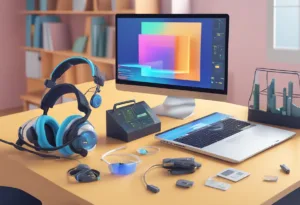
Performance and Compatibility
When developing AR software, it is important to consider the performance and compatibility of the software. AR applications rely heavily on hardware resources, such as the gyroscope, accelerometer, motion tracking, sensors, and camera calibration. The software must be optimized to work seamlessly with the hardware to provide a smooth and immersive experience for the user.
Compatibility is also an important consideration when developing AR software. The software must be compatible with a wide range of devices, including smartphones, tablets, and wearable devices. This requires the use of cross-platform development tools and frameworks that can support multiple operating systems and devices.
Environmental and Hardware Limitations
Environmental and hardware limitations are also important considerations when developing AR software. AR applications rely on sensors and cameras to detect and track the user’s position and movements. However, the accuracy of these sensors can be affected by the environment, such as lighting conditions and obstacles in the user’s surroundings.
Hardware limitations, such as battery life and processing power, can also impact the performance and usability of AR software. Developers must optimize their software to work efficiently with the available hardware resources and minimize the impact on battery life.
To overcome these challenges, developers must use advanced algorithms and techniques to improve the accuracy and reliability of the software. They must also test their software in a variety of environments and hardware configurations to ensure compatibility and usability for all users.
Frequently Asked Questions

Which augmented reality tools are best for beginners?
Beginner-friendly AR tools include Vuforia, EasyAR, and ARToolKit. These platforms come with easy-to-use interfaces and comprehensive documentation, making it easier for beginners to learn and develop AR applications.
What are the top-rated AR/VR development applications?
Some of the top-rated AR/VR development applications include Unity, Unreal Engine, and ARKit. These platforms offer a wide range of features and functionalities, making it easier for developers to create immersive AR/VR experiences.
Are there any free AR development platforms available?
Yes, there are several free AR development platforms available, including Vuforia, ARToolKit, and ARCore. These platforms offer basic features and functionalities, making it easier for developers to get started with AR development without any upfront costs.
How can I download AR development software?
AR development software can be downloaded from the official website of the respective software provider. Most AR development software is available for download on Windows, Mac, and Linux operating systems.
What are the preferred augmented reality solutions for construction projects?
The preferred augmented reality solutions for construction projects include ARToolKit, Vuforia, and ARCore. These platforms offer features such as 3D modeling, object tracking, and real-time collaboration, making it easier for architects and builders to visualize their designs in real-world environments.
Which AR software is most suitable for architectural visualization?
The AR software most suitable for architectural visualization is Unity. It offers a wide range of features and functionalities, including 3D modeling, real-time rendering, and object tracking, making it easier for architects and designers to create immersive visualizations of their designs.

